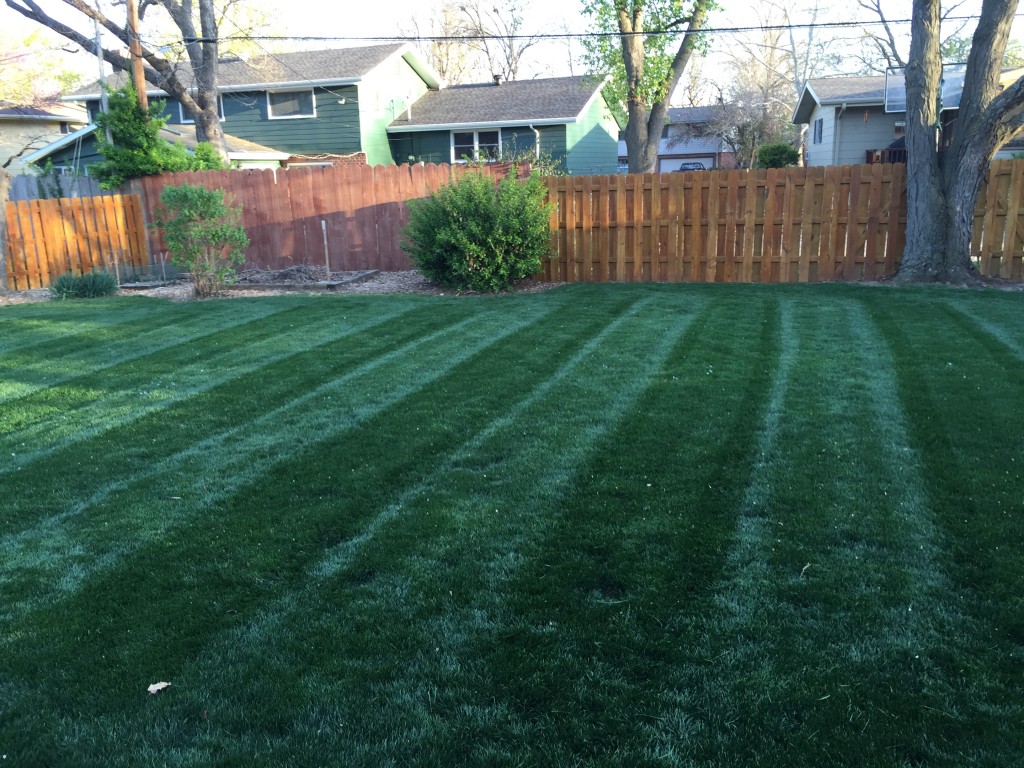(by Jared Hoyle; KSU Turfgrass Research and Extension)
The new John Deere lawn mower commercial cracks me up. I feel like that has been the story of my life. The tag line in the commercial is, “It’s now how fast you mow, It’s how well you mow fast!” Take a look!
https://www.youtube.com/watch?v=EpBDDiQR80A
This gave me in inspiration to write a little article on mowing. First of all, a couple fun facts. Did you know that mowing your grass can be relaxing. Researchers actually found out that the smell of fresh cut grass actually makes people happier. Also, if you really like the smell of cut grass you can have it all the time; candles, air freshers, etc.
Ok now actually to some information about mowing. Mowing is one of the most important cultural practices we do. If we don’t do anything else to our lawns we are at least going to mow. So below are some mowing tips
- Actually, “It’s now how fast you mow, It’s how well you mow fast!” is not really true…. Operate your mower at a safe operating speed. Usually 3 to 5 MPH. This will cut the grass cleanly and thoroughly.
- Mowing height – When you mow turfgrass too short you can get weeds, diseases, and a thin canopy. The same goes it you mow it too tall. So staying in that optimal range is very important. Listed below are the optimal mowing heights for each species and usage.
- Mow according to the 1/3 rule. Remove only 1/3 of the leaf blade at a time. That means the shorter you mow your turf the more often you will have to mow it. According to this rule, for example, if you want to keep your lawn at 2″ then you would mow when it gets to 3″. If you wanted to keep your lawn at 4″ then you could wait till it got to 6″ before you mowed it. But no matter what height you keep your lawn at it still grows the same speed, therefore the shorter you want to keep your lawn the more often you will have to mow it.
- Clippings – Try and keep your clippings on your lawn. It is free fertilizer! Sometimes you may have to bag the clippings because too much grass was cut and you don’t want it to shad out the other grass.
- Always keep a sharp blade. A sharp blade makes your mower more efficient and is better for the turfgrass. A rotary mower actually doesn’t cut the grass, it actually chops the grass off therefore making sure you have sharp blade is very important. A dull blade and rip and tear the grass apart making it look brown unhealthy not to mention it will take a lot of the plant’s energy to repair it.
- Establish a mowing pattern. Blades tend to lean the grass in the direction of the mowing. So switch up the pattern at each mowing. This will also help with soil compaction and turf wear.
- Lastly, maintain your mower. Proper maintenance is a must. It will keep the turfgrass healthy and you safe.
For more information check out the latest Agriculture Today Radio Program about mowing and a publication at the KSRE bookstore on mowing!
http://www.bookstore.ksre.ksu.edu/Item.aspx?catId=545&pubId=712
***Mention of trade names or commercial products in this article is solely for identification purposes and does not imply recommendation or endorsement, nor is criticism implied of similar products not mentioned by Kansas State University.***













